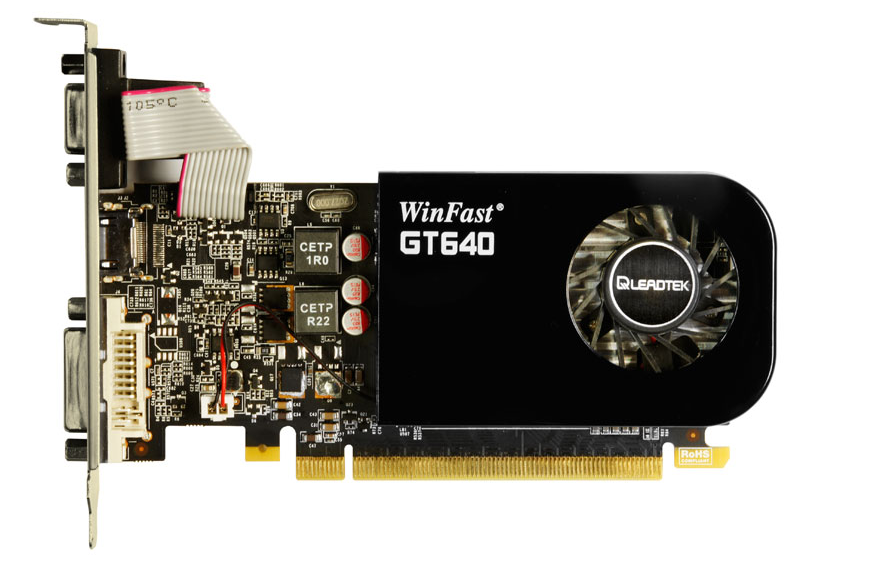Today, we are taking a look at the Leadtek Winfast GT 640 Server GPU. It features a low-profile GPU which users may be interested in for HTPC and server applications. With the new Ivy Bridge CPU, we now have access to PCIe 3.0, and to tackle this nVidia bought out the new Kepler based GPU 600 series. Over the next few articles I will take a look at some GPU offerings that might be of use in servers, workstation and HTPC applications.
The cards I am looking for will need to be:
- Low Profile
- Can be single or double slot width
- PCI Express (PCIe) 3.0 based
- As my expertise lies with nVidia based products I’ll stick with these. I know there are AMD options out there too so those may come later.
I’m looking at the cards one at time, so my thoughts are at the time written, I’ll not have compared them at the time to any other card. I may, at the end of this series, do a summary of devices looked at and pick a best of the bunch.
Leadtek Winfast GT 640 Server GPU Preview
The first card I’m taking a look at is the Leadtek Winfast GT 640 Server GPU. This looks rather nice for a small profile situation. The card fits into a single slot. It will take up the entire width of a slot, with the heatsink/fan combo. This heatsink/fan is in a shroud, and will take air from around the fan blades, then push the air to the front of the card over/through the heatsink. This is a very effective cooling method. However if there is another card in the neighbouring slot that covers the fan blades the cooling efficiency will be affected. A heatsink/fan without a shroud is more desirable in this case.

It is worth pointing out that there are two GT 640 options out there, the other being a larger dual slot design. We are specifically looking at Leadtek’s low profile design here.
Leadtek WinFast GT 640 Server GPU Low Profile Specifications
| GPU | NVIDIA GeForce® GT 640 |
| Graphics Bus | PCI Express 3.0 |
| Memory size | 1024MB/2048MB DDR3 |
| Core clock | 900 MHz |
| Memory clock | 900 MHz (1800 MHz) |
| Output | DVI-I, DVI-D, HDMI, DisplayPort |
| Memory Interface | 128-bit |
| Memory Bandwidth (GB/sec) | 28.5 |
| CUDA Cores | 384 |
| HDCP support | Yes |
The specs above look very impressive, the Kepler based GPU brings us many more CUDA cores, this does not bring us a huge performance boost over the Fermi based GPU’s with fewer CUDA cores, but it can still crunch textures more efficiently. Kepler also means PCI Express 3.0 gets introduced to the graphics world, in turn meaning less bottlenecking as textures get passed between the system and video memory. This isn’t going to be a huge benefit with the GT 640 based GPU’s limited to DDR3 based memory in contrast to higher end GDDR5 GPU cards, but PCIe will become more important later as software catches up on the new technology.
The card comes in both 1GB and 2GB versions, I would highly recommend the 2GB version over the 1GB, for having slower DDR3 memory having the textures closer to the GPU will help performance.



